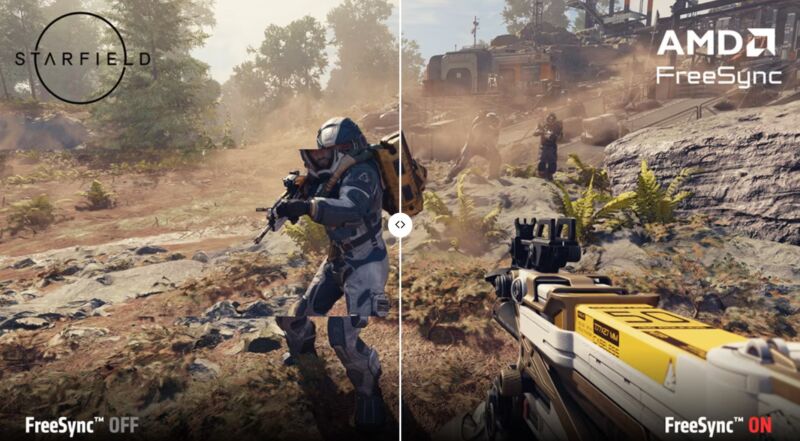
AMD introduced this week that it has ceased FreeSync certification for screens or TVs whose most refresh charges are underneath 144 Hz. Beforehand, FreeSync screens and TVs might have refresh charges as little as 60 Hz, permitting for screens with lower cost tags and ones not focused at critical gaming to hold the variable refresh-rate expertise.
AMD additionally boosted the refresh-rate necessities for its increased AdaptiveSync tiers, FreeSync Premium and FreeSync Premium Professional, from 120 Hz to 200 Hz.
Listed here are the brand new minimal refresh-rate necessities for FreeSync, which have not modified for laptops.
| Laptops | Displays and TVs | |
|---|---|---|
| FreeSync | Max refresh fee: 40-60 Hz | < 3440 Horizontal decision: Max refresh fee: ≥ 144 Hz |
| FreeSync Premium | Max refresh fee: ≥ 120 Hz | < 3440 Horizontal decision: Max refresh fee: ≥ 200 Hz≥ 3440 Horizontal decision: Max refresh fee: ≥ 120 Hz |
| FreeSync Premium Professional | FreeSync Premium necessities, plus FreeSync assist with HDR | FreeSync Premium necessities, plus FreeSync assist with HDR |
AMD will proceed supporting already-certified FreeSync shows even when they do not meet the above necessities.
Curiously, AMD’s minimal refresh-rate necessities for TVs transcend 120 Hz, which many premium TVs presently max out at, as a result of current-generation Xbox and PlayStation supporting max refresh charges of 120 frames per second (FPS).
Saying the modifications this week in a blog post, Oguzhan Andic, AMD FreeSync and Radeon product advertising supervisor, claimed that the modifications had been vital, noting that 60 Hz is now not “thought-about nice for gaming.” Andic wrote that almost all of gaming screens are 144 Hz or increased, in comparison with in 2015, when FreeSync debuted, and even 120 Hz was “a rarity.”
Since 2015, refresh charges have climbed ever increased, with the newest sports activities focusing on aggressive gamers hitting 500 Hz, with show stakeholders exhibiting no indicators of ending the push for extra velocity. In the meantime, FreeSync cemented itself because the extra accessible taste of Adaptive Sync than Nvidia’s G-Sync, which for a very long time required particular {hardware} to run, elevating the prices of supporting merchandise.
AMD’s announcement did not handle necessities for refresh-rate ranges. Hopefully, OEMs will proceed making FreeSync shows, particularly screens, that may nonetheless combat display screen tears when framerates drop to the double digits.
The modifications must also elevate the longer term worth of entry for a monitor or TV with FreeSync TV. Typically the inclusion of FreeSync served as a differentiator for folks looking for an reasonably priced show and who often do some gentle gaming or get pleasure from different media with fast-paced video playback. FreeSync committing itself to 144 Hz and sooner screens might assist the certification be aligned extra with critical gaming.
In the meantime, there’s nonetheless hope for future, slower screens to get certification for variable refresh charges. In 2022, the Video Electronics Requirements Affiliation (VESA) launched its MediaSync Show for video playback and AdaptiveSync for gaming, certifications which have minimal refresh-rate necessities of 60 Hz. VESA developed the prolonged detailed certifications with its dozens of members, together with AMD (a show could possibly be MediaSync/AdaptiveSync and/or FreeSync and/or G-Sync licensed). Along with attempting to enchantment to core players, it is potential that AMD additionally sees the VESA certifications as extra acceptable for slower shows.
